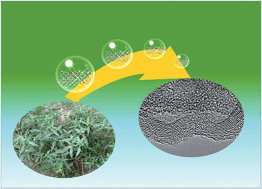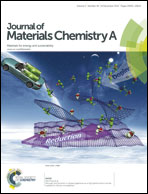Transformation of worst weed into N-, S-, and P-tridoped carbon nanorings as metal-free electrocatalysts for the oxygen reduction reaction†
Abstract
Substituting sustainable/cost-effective catalysts for scarce and costly metal ones is currently among the major targets of sustainable chemistry. Herein, we report the synthesis of N-, S-, and P-tridoped worst-weed-derived carbon nanorings (WWCNRs) that can serve as a metal-free and selective electrocatalyst for the oxygen reduction reaction (ORR). The WWCNRs are synthesized via activation-free polymerization of worst weed, Eclipta prostrata, and then removal of the metallic residues by using HCl. The WWCNRs exhibit good catalytic activity towards the 4 electron-transfer ORR with a low onset potential and high kinetic limiting current density, along with high selectivity (introducing CO, the sample loses only <7% of its original activity, in contrast to more than 30% loss of the original activity for 20 wt% Pt/C over 4000 s of the continuous ORR) and long durability (94% of the initial current still persists at the sample electrode compared with a 87% current retention at commercial Pt/C electrodes after 18 000 s). The present work highlights the smart transformation of organic-rich worst weed into value-added functional materials with great potential for applications such as fuel cells, lithium–air batteries, photocatalysis, and heterocatalysis.


 Please wait while we load your content...
Please wait while we load your content...